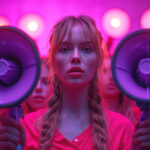Color Psychology in Branding: How Strategic Color Choices Shape Consumer Perception
Why Color Psychology in Branding Matters
Colors speak a universal language. They shape perceptions, stir emotions, and influence consumer behavior — often without conscious awareness. In fact, research shows that up to 90% of snap judgments about products can be based on color alone.
- Build trust and brand recognition
- Connect with your target audience
- Differentiate you from competitors
- Inspire specific actions or emotional responses
That’s why iconic brands — from Coca-Cola’s bold red to Apple’s minimalist white — use color psychology in branding with precision and purpose.
The Psychology of Brand Colors: What Each Hue Communicates
| Color | Meaning | Common Industries | Examples |
|---|---|---|---|
| Red | Energy, passion, urgency | Food, retail, entertainment | Coca-Cola, Netflix, YouTube |
| Blue | Trust, reliability, professionalism | Tech, finance, healthcare | Facebook, Visa, Samsung |
| Green | Growth, nature, health | Wellness, sustainability, organic | Whole Foods, Spotify, Starbucks |
| Yellow | Optimism, creativity, warmth | Lifestyle, travel, children | IKEA, Snapchat, McDonald’s |
| Black | Luxury, power, sophistication | Fashion, automotive, premium services | Chanel, Nike, Mercedes-Benz |
| Purple | Imagination, royalty, spirituality | Beauty, education, luxury | Cadbury, Hallmark, Yahoo |
| Orange | Enthusiasm, affordability, friendliness | Youthful, value-driven brands | Fanta, Amazon, SoundCloud |
How to Choose the Right Brand Colors
Choosing brand colors isn’t just about aesthetics — it’s a strategic decision rooted in color theory in marketing and audience psychology. Here’s how to approach it:
- Define Your Brand Personality: Are you bold and energetic, or calm and professional? Your colors should reflect your core values and tone.
- Know Your Target Audience: Age, culture, and gender all influence how people respond to color. Tailor your palette to resonate with your demographic.
- Consider Industry Norms — Then Decide to Blend or Stand Out: It’s okay to break away from expected color schemes if it’s intentional and aligns with your brand message.
- Think About Contrast and Versatility: Your colors should work across digital and print, light and dark backgrounds, and be accessible to all users.
- Limit Your Palette: Too many colors can dilute your identity. Most successful brands stick to 1–3 core colors with a supporting palette.
Real-World Example: IKEA’s Strategic Use of Color Psychology in Branding
IKEA’s use of blue and yellow is instantly recognizable and deeply tied to its brand identity.
- Blue conveys trust, reliability, and simplicity — reflecting IKEA’s promise of affordable, functional home solutions.
- Yellow adds optimism, friendliness, and accessibility — matching their family-focused, cheerful store experience.
Together, these colors not only echo the Swedish flag (IKEA’s origin) but also reinforce the brand’s values of quality, affordability, and approachability.
Conclusion: Let Color Work for Your Brand
Color is more than decoration — it’s strategy. When used intentionally, color psychology in branding becomes a silent ambassador for your business, shaping how your audience perceives, feels, and remembers you. By understanding the psychological impact of colors, you can build a brand identity that resonates deeply and drives meaningful engagement.
At Betterfly, we don’t just pick colors — we craft brand identities that speak, resonate, and
convert.
Ready to Build a Brand That Speaks Without Words?
Let Betterfly help you choose the right colors, tone, and identity for your brand. Whether you’re
launching something new or rebranding your business, we craft visuals that align with strategy
— and emotions.
📞 00961 3 41 25 24
📩 nathalie.jeha@betterflylb.com
Recommended Reads: Content Marketing vs Paid Advertising: Choosing the Right Strategy for Your Business
Author Profile
Latest entries
 Blog ListAugust 14, 2025Color Psychology in Branding: How Strategic Color Choices Shape Consumer Perception
Blog ListAugust 14, 2025Color Psychology in Branding: How Strategic Color Choices Shape Consumer Perception Blog ListJuly 23, 2025Understanding Gen Z Behavior: Gen Z Marketing Strategies 2025
Blog ListJuly 23, 2025Understanding Gen Z Behavior: Gen Z Marketing Strategies 2025 Blog ListJanuary 15, 2025Shaping the Future: The Impact of AI and ML in Digital Marketing
Blog ListJanuary 15, 2025Shaping the Future: The Impact of AI and ML in Digital Marketing Blog ListJuly 7, 2023Best Places to Visit in Lebanon in 2023
Blog ListJuly 7, 2023Best Places to Visit in Lebanon in 2023












